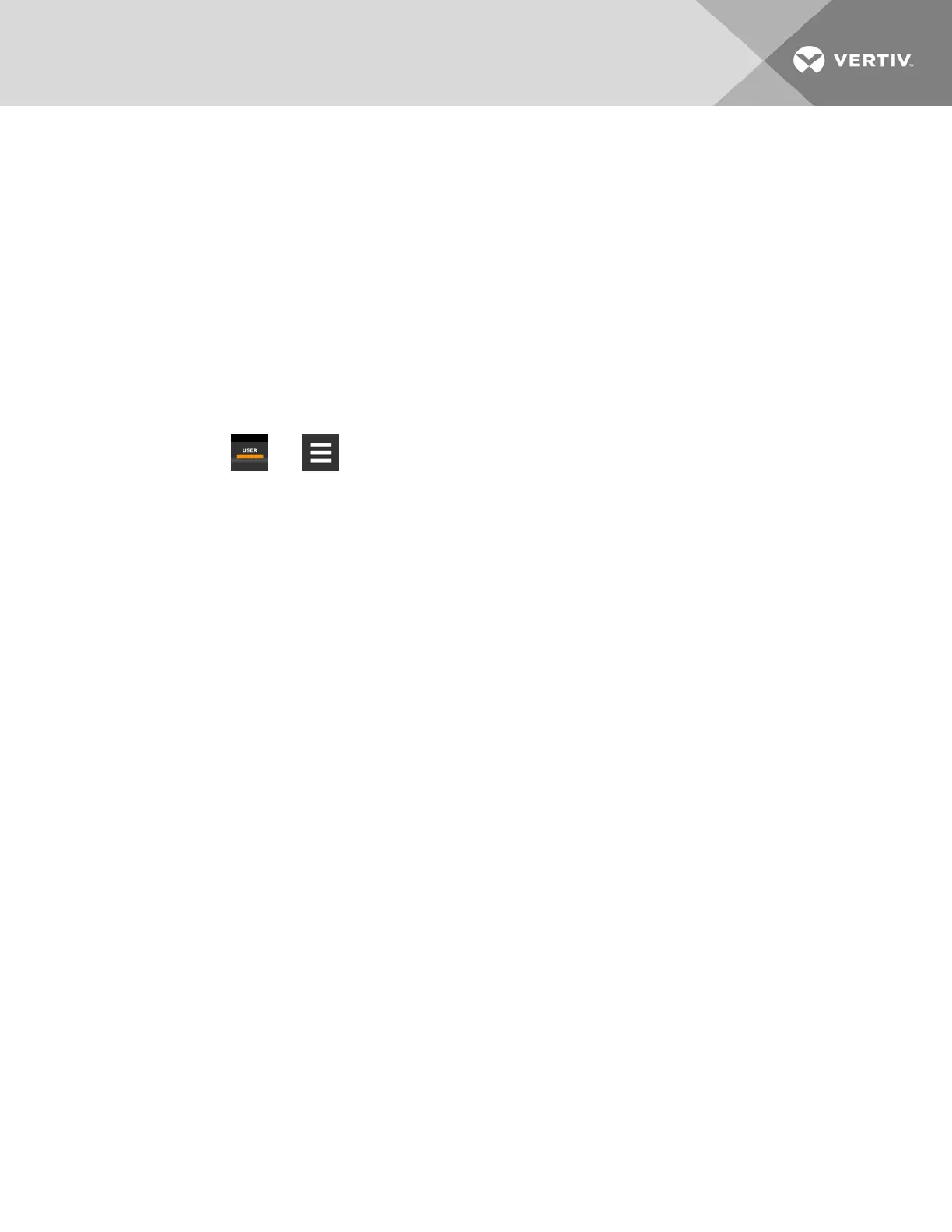2 USER OPERATION
2.1 Viewing and Editing Setpoints for the Cooling Unit
NOTE: User level access allows viewing and editing only a limited number of setpoints. To view or adjust all setpoints,
you must have service level access. See Editing Setpoints for the Cooling Unit on page19.
NOTE: Depending on the type of thermal management unit, included components, and control settings of your
system, the options on your iCOM display may differ.
NOTE: Your Liebert® DSE™ Packaged Solution does not offer humidification or dehumidification functions. Please
disregard those settings/fields when mentioned in this guide or displayed on the iCOM controller.
2.1.1 Editing Temperature Setpoints
1. Touch , then > Setpoints > Temperature Control. The TEMPERATURE CONTROL secondary panel
opens.
2. Refer to User Temperature Setpoint Options below, Temperature Control –TemperatureSetpointsandCooling
Operation on page21, and Compressor Control by Cooling Requirement on page23 to adjust the setpoint
options, then touch Save. The setpoint is updated.
• Touch Cancel to discard the changes.
NOTE: Depending on the type of thermal management unit, included components, and control settings of your
system, all of the options listed may not be available on your iCOM display.
User Temperature Setpoint Options
BMS Backup Temp Setpoint
Selects a temperature setpoint that activates in the event of a BMS timeout. The BMS timer must be configured for
this setpoint to activate. See Setting BMS Backup Setpoints on page81.
Optimized Aisle Enabled
Read-only. Indicates that iCOM is configured for optimized aisle operation. See Teamwork Mode3—Optimized Aisle
Operation on page66.
Temperature Control Sensor
Selects sensor that controls cooling. Values are:
• Supply Sensor: Temperature control is based on maintaining the temperature of the discharge air from the
cooling unit. See Supply Sensors on page88.
• Remote Sensor: Temperature control is based on the temperature reading(s) from wired remote sensor(s). See
Wired Remote Sensors on page86.
• Return Sensor: Temperature control is based on maintaining the temperature of the air returning to the cooling
unit.
2 User Operation
13

